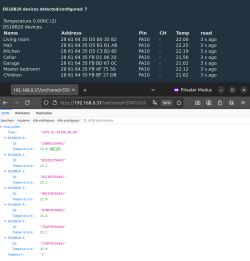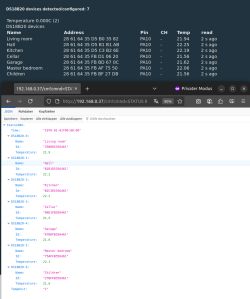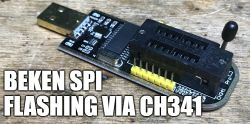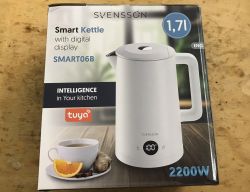@Tilator do you know incidentally how multiple sensors on one device are handled? So we can follow this for the other driver, too?
If not, I can try to check the code ...
Added after 16 [minutes]:
No need to check - found it:
https://tasmota.github.io/docs/DS18x20/#multiple-sensors
Sadly it doesn't use the human readable name but the ID...
Added after 2 [hours] 12 [minutes]:
Opened PR#1811 for the multiple DS1820 sensors.
There is one "plain" Tasmota version, adding "-<id>" to the sensor and an Id to identify the sensor (middle 48 bits from ROM address in reverse order).

Included is a (commented out) version which additionally adds a "Name": field in JSON:

(both images are with "wrong" index number, which is now corrected - Tasmota will start index with "-1" not with "-0")
If not, I can try to check the code ...
Added after 16 [minutes]:
No need to check - found it:
https://tasmota.github.io/docs/DS18x20/#multiple-sensors
{"Time":"2021-01-02T09:09:44","DS18B20-1":{"Id":"00000566CC39","Temperature":13.3},"DS18B20-2":{"Id":"0000059352D4","Temperature":1.2},"DS18B20-3":{"Id":"000005937C90","Temperature":22.5},"TempUnit":"C"}Sadly it doesn't use the human readable name but the ID...
Added after 2 [hours] 12 [minutes]:
Opened PR#1811 for the multiple DS1820 sensors.
There is one "plain" Tasmota version, adding "-<id>" to the sensor and an Id to identify the sensor (middle 48 bits from ROM address in reverse order).

Included is a (commented out) version which additionally adds a "Name": field in JSON:

(both images are with "wrong" index number, which is now corrected - Tasmota will start index with "-1" not with "-0")




